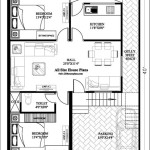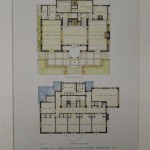Essential Aspects of Minnesota Bluebird House Plans
Minnesota's state bird, the Eastern Bluebird, is a beloved harbinger of spring and a joy to behold. Providing nesting boxes for these beautiful birds is a rewarding way to support their populations and enhance your backyard habitat. To ensure the well-being of these avian visitors, it's crucial to design and construct bluebird houses based on specific guidelines.
Optimal Dimensions
The dimensions of a Minnesota bluebird house play a vital role in providing a suitable nesting environment. The recommended dimensions for the interior of the house are as follows:
- Height: 5 - 6 inches
- Width: 5 - 6 inches
- Depth: 6 - 8 inches
These dimensions provide ample space for the birds to nest comfortably and rear their young without feeling cramped.
Appropriate Entrance Hole
The entrance hole is another critical aspect to consider. It should be round and have a diameter of 1-1/2 inches. The hole should be placed in the upper third of the house, approximately 1-1/2 to 2 inches from the top. This placement helps prevent predators from reaching into the nest and harming the occupants.
Ventilation and Drainage
Proper ventilation is essential to regulate temperature and moisture levels inside the house. Small holes or slots should be drilled into the sides or bottom of the box to allow for air circulation. Additionally, drainage holes in the floor will help prevent water buildup during rain.
Non-Toxic Materials
The materials used to construct the bluebird house should be non-toxic and safe for the birds. Opt for untreated wood species such as cedar or pine. Avoid materials that can leach harmful chemicals into the nesting environment.
Perch and Landing
An optional perch or landing area near the entrance hole can provide the birds with a convenient spot to land before entering the house. The perch should be located below the entrance hole and should be designed to prevent predators from using it as a foothold to access the nest.
Predators and House Placement
To protect the bluebird nest from predators like snakes or squirrels, place the house in an open area 5-8 feet above the ground. Avoid placing the house near dense foliage or structures that could provide cover for predators. Additionally, predator guards or baffles can be installed around the entrance hole to further deter potential intruders.
Maintenance
Once the bluebird house is installed, regular maintenance is necessary to ensure its continued suitability. Clean the house thoroughly each year after the nesting season to remove nesting material and prevent parasites or diseases from accumulating. Inspect the box for any damage or repairs that may be needed to maintain its structural integrity.
By following these guidelines when creating Minnesota bluebird house plans, you can provide a safe and welcoming nesting habitat for these charming birds. The satisfaction of witnessing bluebirds raising their young in your backyard and enjoying their cheerful songs will be a cherished experience.

Nest Box Plans More Bluebird Recovery Program Of Minnesota

Free Bluebird House Plans Multiple Designs

How To Build A Bluebird Nest Box Audubon

Nest Box Plans More Bluebird Recovery Program Of Minnesota

The Wildlife Garden Build Nest Boxes For Wild Birds Osu Extension Service

Bulletin 7117 Birdhouse Basics Cooperative Extension Publications University Of Maine

Nest Box Plans

Bluebird House With Slot Entry Update Not Your Grandpa S Plans

Building A Safe Home For Bluebirds

Nest Box Plans More Bluebird Recovery Program Of Minnesota








